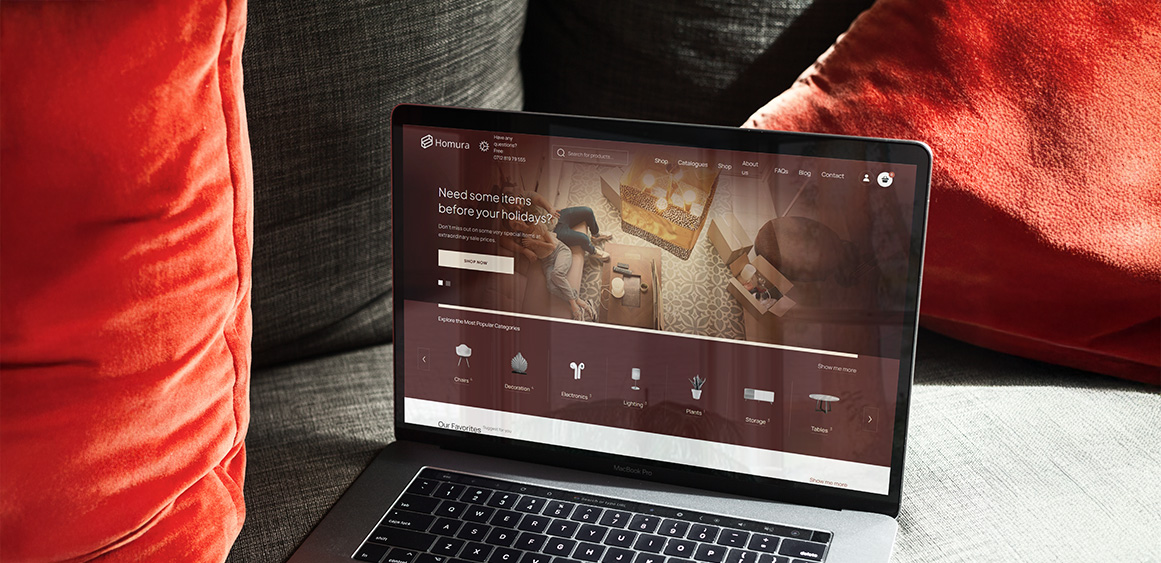Introduction

In the past, building an ecommerce website was simple: pick a platform like Shopify or WooCommerce, install a theme, and go live. But today’s online shoppers expect fast, personalized, and seamless experiences across multiple devices and channels.
This is where headless ecommerce comes in — a modern approach that gives businesses the flexibility to build unique shopping experiences without being tied to a single platform’s front-end limitations.
But what exactly does it mean, and is it right for your business? Let’s break it down.
What is Headless Ecommerce?

In a traditional ecommerce website, the front-end (what users see) and the back-end (where you manage products, orders, etc.) are tightly connected.
Headless ecommerce “decouples” the front-end from the back-end, allowing you to use any technology to build your store’s design and connect it to an ecommerce engine via APIs.
Example:
Traditional Setup: Shopify theme → Shopify checkout → Shopify product pages.
Headless Setup: Custom front-end (built on React, Next.js, or Webflow) → connected to Shopify or BigCommerce backend via APIs.
This approach gives you more control over design, speed, and user experience.
How Does It Work?
Here’s how headless ecommerce functions:
Backend (Commerce Engine): Your inventory, pricing, orders, and product data are managed here. Platforms like Shopify, BigCommerce, or even custom-built systems handle this.
API Layer: APIs (Application Programming Interfaces) connect the backend with the front-end, allowing data to flow between them.
Frontend (Presentation Layer): This is where you design the user experience using frameworks or tools like React, Vue.js, or Webflow.
Because these layers are separate, you’re free to experiment with the front-end while keeping your backend stable.
Benefits of Headless Ecommerce
Headless ecommerce isn’t just a buzzword — it offers real advantages:
Flexibility in Design
Unlike traditional platforms, you’re not limited to pre-built templates. You can create unique, branded experiences that stand out from competitors.
Better Performance
Headless sites can be faster because the front-end is built with modern frameworks optimized for speed and mobile performance. Faster sites = higher conversion rates.
Omnichannel Readiness
Headless allows you to deliver content and products across multiple channels — web, mobile apps, kiosks, smart devices — without separate backends.
Scalability
As your business grows, you can add new features or update the front-end without disrupting your backend operations.
Future-Proof Technology
Since it’s API-driven, you can swap out or upgrade technologies without a complete rebuild.
SEO Benefits
Headless ecommerce gives you more control over SEO than traditional platforms.
Faster Load Times: Improve rankings and user experience.
Custom URLs & Metadata: No platform limitations.
Better Technical SEO: Optimize Core Web Vitals and structured data.
- Content Flexibility: Pair with a headless CMS for SEO-rich blogs and landing pages.
Challenges of Headless Ecommerce

While headless ecommerce is powerful, it’s not for everyone. Consider these challenges:
Higher Development Costs
Building and maintaining a custom front-end often requires skilled developers, which can cost more than using pre-made templates.
Longer Setup Time
Compared to launching a quick Shopify or WooCommerce theme, headless projects take more time to develop.
Ongoing Maintenance
You’ll need a development team (or agency) to maintain, update, and scale the system.
Who Should Consider Headless Ecommerce?
Headless is not a “one-size-fits-all” solution. It’s best for:
Growing brands that have outgrown template limitations.
Businesses needing custom experiences, like unique product configurators.
Omnichannel retailers selling across multiple platforms and devices.
Enterprise-level ecommerce companies that need maximum scalability.
If you’re just starting with a small budget, a traditional ecommerce setup might be better until you scale.
Real-World Examples
Big brands using headless ecommerce include:
Nike – Custom React-based front-end for speed and experience.
Target – Omnichannel experience with multiple touchpoints.
Venmo Storefronts – API-driven commerce for a seamless UX.
These companies chose headless to gain more control over branding and performance.
Should You Build One?
Here’s a simple rule of thumb:

Final Thoughts
Headless ecommerce isn’t a trend — it’s the future for brands that want control, speed, and innovation. But it’s not for everyone.
If you have the budget and vision to build custom shopping experiences, headless is worth the investment. If not, start simple and plan for a headless transition later.
Call to Action:
Want to explore headless ecommerce for your business? Contact Fineart Design Agency — we help brands design, build, and launch custom ecommerce websites that scale.



